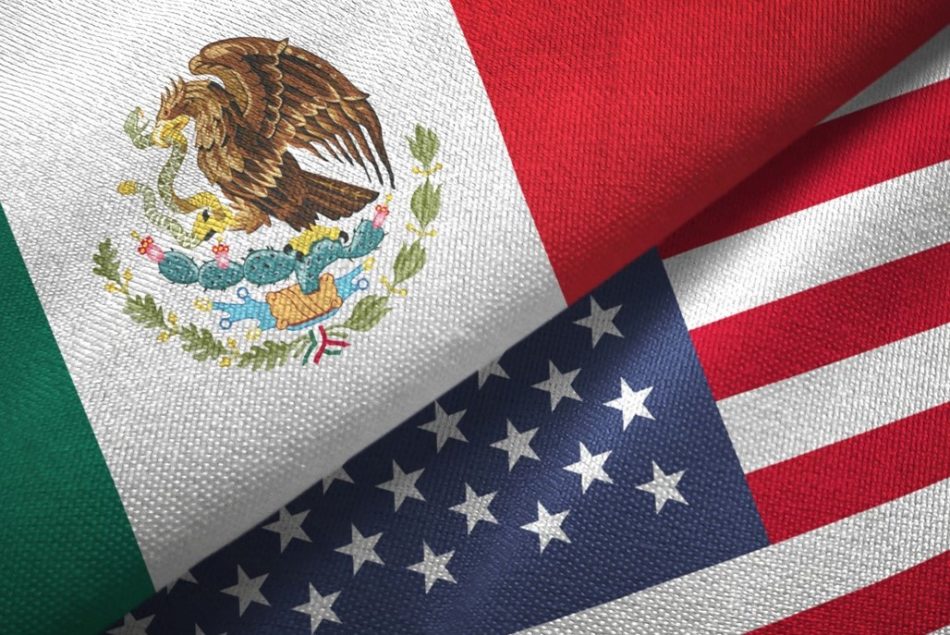
Interest in nearshoring — moving production and related supply chain activities away from China (or other far-away locales) and closer to home — has grown in recent years. And many North American companies seeking nearshoring solutions have found them in Mexico. In fact, nearshoring operations in Mexico saw an investment of $17.2 billion from January through October this year, 25.5% more than it did during the same timeframe in 2021, according to Mexican News Daily.
The push toward nearshoring comes as global supply chains are scrutinizing their supply chains like never before — and with good reason.
“The past three-and-a-half years have been times of great instability, some would say chaos, in all things supply chain — getting finished goods to buyers,” says Keith Hartley, chief executive officer of LevaData.
China: Risky Business
China has been associated with much of that supply chain instability. The country is still a manufacturing powerhouse, of course. In fact, 40% of all of the world’s goods still traverse through China, Hartley says. But outsourcing manufacturing to China today comes with a number of risks.
And that’s a big problem for many U.S. supply chain professionals. Although cost is still a very important factor, removing risk from operations is the Number-1 concern of many supply chain decision-makers today, says Dylan Alperin, head of professional services for Keelvar.
Transportation costs are a major China-related risk. The cost to move one 40-foot ocean freight container from Shanghai to Los Angeles increased from approximately $1,500 in the beginning of 2020 to more than $20,000 during the height of the COVID-19 pandemic, Alperin says. Although the cost has since come down considerably, it’s still much higher than it was pre-pandemic.
“I think it made everybody realize how at risk they were,” he says. “The ocean freight market is heavily controlled by only a small handful of steamship lines. And on trade lanes like APAC [Asia-Pacific] to the U.S., 70% of the volume is controlled by three shipping alliances. All of these companies work together and have these partnership agreements; as soon as somebody needs to increase pricing or wants to increase pricing, everybody very, very quickly follows. And there’s really no option for companies to have alternative solutions.”
There are many other risks associated with outsourcing manufacturing to China, Alperin says, including:
- Rising labor costs.
- U.S.-Chinese political tensions related to human rights issues and the “hot blood issue” of Taiwan.
- Port shutdowns tied to frequent “surprise” COVID-19-related lockdowns.
- Intellectual property issues.
Mexico Brings Advantages
It’s apparent that U.S. companies currently outsourcing manufacturing operations to China have plenty of reasons to consider nearshoring. But why choose Mexico?
The country’s proximity to the United States certainly factors into decision-making. “Mexico is right next door,” Alperin says. “Getting something from the plant to your door from China takes anywhere from one to three months. In Mexico, it’s going to be weeks.”
Mexican manufacturers can ship products by rail or by truck. Both means of transport saw cost swings recently, he says, but nothing close to those on the ocean freight side. “There is probably less risk on transportation costs,” Alperin says.
The relationship between the U.S. and Mexico also lacks serious political tensions, he says. In addition, a strong trade agreement, in the form of the United States-Mexico-Canada Agreement, is in place.
“The flow of goods is very easy and free between the two countries,” Alperin says.
Mexico is no newbie to manufacturing, either. It has deep manufacturing roots, he says, particularly within the automotive sector. What’s more, U.S. companies have been successfully outsourcing manufacturing to Mexico for many years. “Mexico has a pretty skilled labor force and a pretty sophisticated manufacturing base,” Hartley adds.
Another plus? Alperin says Mexico’s average labor costs are now in line with those of China. Fortune, meanwhile, reports that those costs are now even lower than China’s.
Not Without Drawbacks
Despite all of its advantages, nearshoring to Mexico does come with potential challenges. For one thing, although Mexico’s skilled labor base is large, it’s certainly not unlimited.
“Oftentimes, the same manufacturers are fighting over the same top talent pool in manufacturing in a burgeoning, sort of high-growth economy like Mexico’s,” Hartley says. “I see that as kind of the battleground.”
What’s more, Mexico doesn’t have the highly skilled labor base that’s required for the manufacture of some high-tech products such as semiconductors, Alperin says. However, there’s certainly opportunity for Mexico to build that base in the near future.
Other challenges include energy-efficiency and infrastructure concerns and a lack of certainty in public policy, Mexico Business News reports.
Make an Informed Decision
Alperin advises U.S. companies to take some time in decision-making — using good data. They should have a procurement process capable of looking at “all of the different pieces” simultaneously, including changes in lead time, transportation cost and labor cost, and how they will impact the price of finished or intermediate goods.
“I think the biggest thing we probably learned over the last couple of years is that we have no idea where the next problem is going to occur or how big it’s going to be; it’s a surprise every day,” he says. “And we found that most companies were not ready for those surprises. They didn’t have a lot of agility; they didn’t have fast processes. You definitely need a way that you can really, really quickly react to these changes; evaluate the cost tradeoffs with the lead time tradeoffs and the other risks so that you are prepared when things change.”
- Coinsmart. Europe’s Best Bitcoin and Crypto Exchange.Click Here
- Platoblockchain. Web3 Metaverse Intelligence. Knowledge Amplified. Access Here.
- Source: https://www.supplychainbrain.com/blogs/1-think-tank/post/36116-is-moving-manufacturing-from-china-a-sound-risk-reduction-strategy